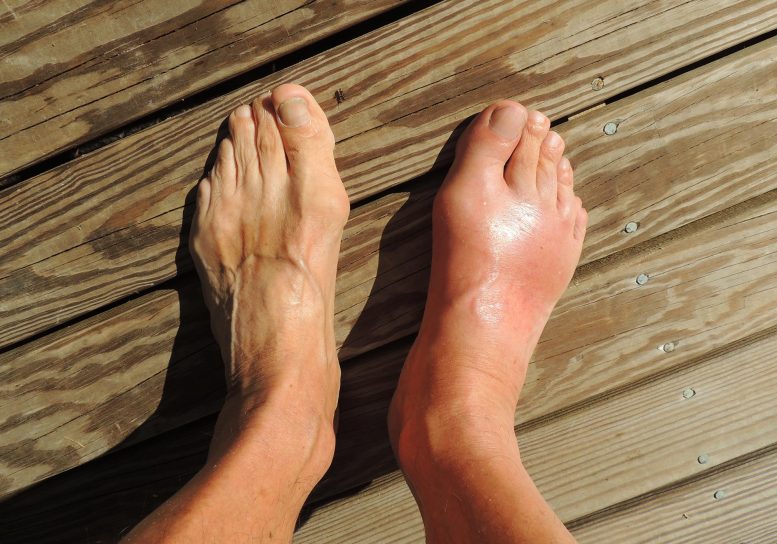
The prevalence of gout — a form of arthritis characterized by severe pain, redness, and tenderness in joints — increased across the world at an alarming rate from 1990 to 2017, according to an analysis published in Arthritis & Rheumatology.
The analysis found that there were approximately 41.2 million prevalent cases of gout in 2017, with the rate of new diagnosed cases being 92 per 100,000 people, an increase of 5.5% from 1990.
Gout was more common in males and in older individuals. Also, the burden of gout was generally highest in developed regions and countries. High body mass index and impaired kidney function were risk factors for gout.
“The increasing trend of gout burden is most likely to continue as the global aging population is on the rise,” said senior author Emma Smith, PhD, of The University of Sydney, in Australia. “Attempts to lessen the disease onset and future burden of gout require better awareness, especially of risk factors, and early diagnosis and treatment.”
Reference: “Prevalence, incidence and years lived with disability due to gout and its attributable risk factors for 195 countries and territories 1990‐2017: a systematic analysis of the Global Burden of Disease Study 2017” by Saeid Safiri, Ali Asghar Kolahi, Marita Cross, Kristin Carson‐Chahhoud, Damian Hoy, Amir Almasi‐Hashiani, Mahdi Sepidarkish, Ahad Ashrafi‐Asgarabad, Maziar Moradi‐Lakeh, Mohammad Ali Mansournia, Jay S Kaufman, Gary Collins, Anthony D Woolf, Lyn March and Emma Smith, 4 August 2020, Arthritis & Rheumatology.
DOI: 10.1002/art.41404








 User Center
User Center My Training Class
My Training Class Feedback
Feedback












Comments
Something to say?
Log in or Sign up for free